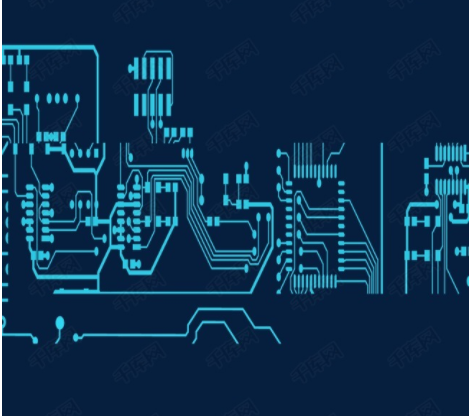Skills of manual soldering with electric soldering iron in circuit board processing and assembly
In the design, processing, and testing of PCBA circuit boards, there are many places where you need to use an electric soldering iron for manual soldering. The first-line manual soldering master will tell you the manual soldering skills.
The difference between manual soldering with electric soldering iron and machine soldering, such as wave soldering and reflow soldering, is that manual soldering with soldering iron has more influence from human factors. Unlike machine soldering, once the process parameters are adjusted, the production is very stable. Manual soldering also has the problems of soldering temperature and soldering time. We first introduce the manual lead-free soldering process of the electric soldering iron, the soldering process window, and the heat transfer of the electric soldering iron to the soldering. It is necessary to deeply understand the principle of the plate, the meaning of the welding temperature and the welding time, through theoretical guidance and diligent practice, to become a qualified skilled worker.

1. Make preparations before welding
1. When we just use a new electric soldering iron, we must first have a preliminary understanding of the soldering iron's own characteristics, such as working voltage, electric power, heat recovery rate, the size and variety of the soldering iron tip
2. It should be understood whether the types of solders are lead-free solders, and the thickness of their melting point tin wires
3. Understand the types of components, such as plug-in or patch components, and heat sensitive keys
4. Understand the material of the printed board, the type of plating of the pad, such as whether it is tin-based, gold-plated, osp, and the parameters. Generally, the temperature of the gold-plated board for soldering osp should be appropriately higher than the heat absorption of the tin substrate and the multi-layer board The amount is greater than double-layer boards and single-layer boards;
5. Be familiar with the size of the solder joints and the speed of heat dissipation of the soldering surface;
6. The anti-static performance of the electric soldering iron, whether the workbench has an anti-static grounding port, usually when the electric soldering iron is connected to the power supply, the anti-static channel should also be connected.
In short, familiarity with the performance of the tool and the basic parameters of the welding object is very useful for adjusting the temperature and model of the soldering iron tip. Of course, when conditions are available, the welding process parameters can be further confirmed by the PCB temperature test and trial welding.
2. How to operate the soldering iron
Operators who use electric soldering iron for manual welding for the first time should strictly require themselves, develop good operating habits, achieve the correct welding posture, and be proficient in the basic welding steps and the basic essentials of manual welding.
1. Correct welding posture
In the manual welding of electronic products, sitting welding is generally adopted. The height of the workbench and the seat should be appropriate. The relative position between the operator's head and the soldering iron should be 30-50cm, holding the soldering iron in one hand and the tin wire in the other hand. And visually observe the solder joints.
2. The method for the welding operator to hold the electric soldering iron
Generally, depending on the size of the soldering iron, there are three different operation methods: reverse grip, forward grip, and pen grip. The reverse grip is suitable for large solder joints with larger power soldering irons greater than 75 watts; The grip method is suitable for the operation of medium-power electric soldering irons and electric soldering irons with elbows, while the pen grip method is suitable for low-power electric soldering irons to solder components on the printed circuit board, which is mainly used for manual soldering of electronic products.
3. The direction of the soldering iron contacting the solder joint
When soldering electronic products with the pen-hold method, the electric soldering iron should be contacted with the solder joints in a 45-degree direction, which is conducive to the operation and observation of the solder joint formation.
4. How to hold tin wire
There are usually two methods for holding solder wire, one is suitable for continuous welding, and the other is suitable for intermittent (welding is usually larger in solder joints). In the actual soldering operation, wear gloves when handling the solder wire. Especially lead-containing tin wire, to prevent the skin from frequent contact with lead.
5. Basic operation of manual welding
The manual welding operation process can be subdivided into five steps, which are required to be completed within 3 to 5 seconds. They are:
a. Be prepared to approach the soldering iron tip and tin wire to the pad
b. Heating, first put the soldering iron head on the pad, the pad is preheated first
c. Place the tin wire on the contact part of the soldering iron tip and the pad to melt it quickly
d. After the solder joints are formed, first remove the tin wire
e. Remove the electric soldering iron and cool the solder joints to form
In the case of small solder joints, the three-step method can also be used to complete the welding, and the steps bc in the five-step method are integrated, and the steps de are integrated.
ipcb is a high-precision, high-quality PCB manufacturer, such as: isola 370hr PCB, high-frequency PCB, high-speed PCB, ic substrate, ic test board, impedance PCB, HDI PCB, Rigid-Flex PCB, buried blind PCB, advanced PCB, microwave PCB, telfon PCB and other ipcb are good at PCB manufacturing.